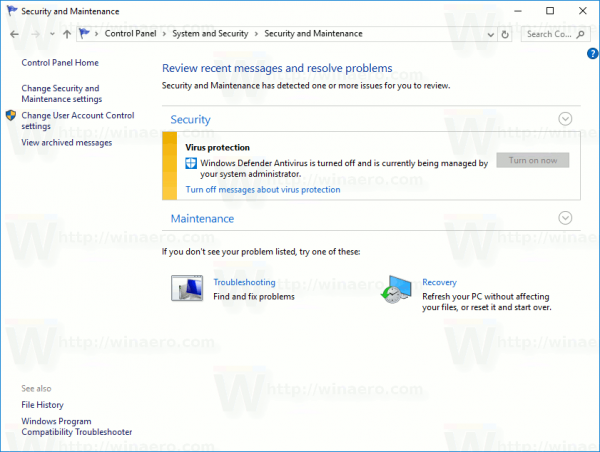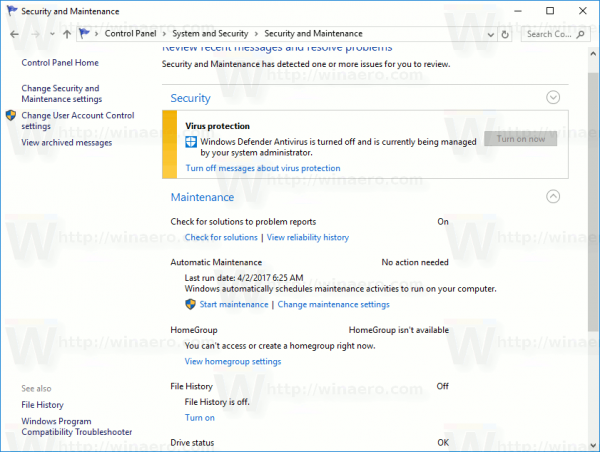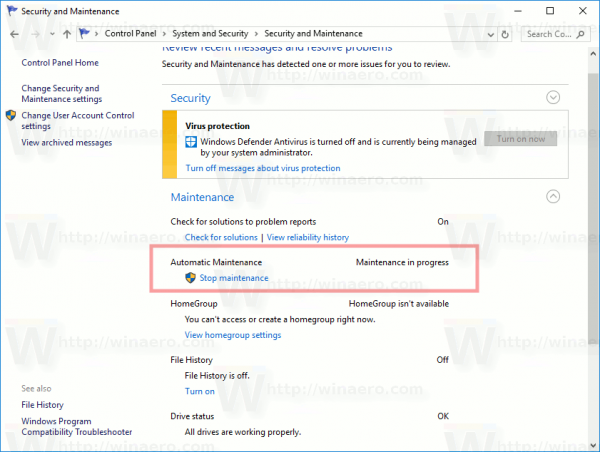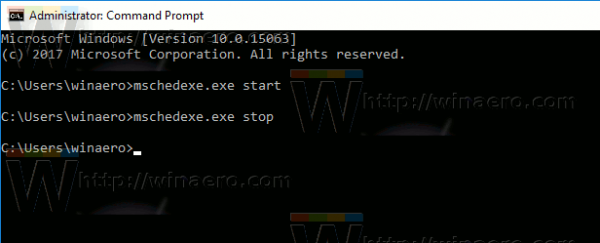When you are not using your PC, Windows 10 performs automatic maintenance. It is a daily scheduled task that runs out-of-the-box. When enabled, it performs various tasks like app updates, Windows updates, security scans and many other things. Here is how to start or stop maintenance manually in Windows 10.
Advertisеment
To start or stop maintenance in Windows 10 manually, do the following.
First of all, ensure that your user account has administrative privileges. Now, follow the instructions below.
- Open the classic Control Panel app.
- Go to Control Panel\System and Security\Security and Maintenance. It looks as follows (the screenshot below is from Windows 10 Creators Update version 1703):
 Note: In the screenshot above, you can see Windows Defender's Antivirus disabled on my PC. If you need to learn how I disabled it, refer to the article: Disable Windows Defender in Windows 10.
Note: In the screenshot above, you can see Windows Defender's Antivirus disabled on my PC. If you need to learn how I disabled it, refer to the article: Disable Windows Defender in Windows 10. - Expand the Maintenance box to see the related controls.

- To start the maintenance, click the link "Start maintenance" with the yellow-blue shield icon (see the screenshot above). The link will change its name to "Stop maintenance".
 A special text label on the right indicates that maintenance is in progress.
A special text label on the right indicates that maintenance is in progress. - To stop the maintenance, click the link "Stop maintenance". That's enough to terminate it.
There is an alternative way to start or stop maintenance. You can use a special MSchedExe console utility to initiate the maintenance process. Here is how it can be done.
Open a new elevated command prompt instance and type or paste one the following commands.
To start maintenance, use the command:
mschedexe.exe start
The next command will stop maintenance:
mschedexe.exe stop
The commands above do not produce output.

Automatic Maintenance is a useful feature. While your computer is idle, it tries to maintain operating system performance, security and keep it up-to-date. The main purpose of the Automatic Maintenance feature is to not impact the performance of the OS negatively, so it combines all its tasks and runs it in the background. Now you know how to start it manually if required. If you need to disable it, see How to disable Automatic Maintenance in Windows 10.
Support us
Winaero greatly relies on your support. You can help the site keep bringing you interesting and useful content and software by using these options:
